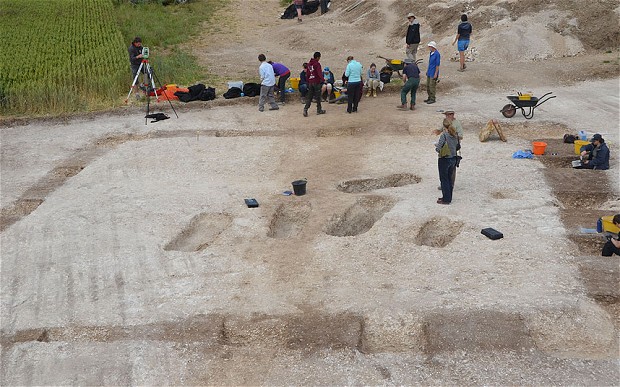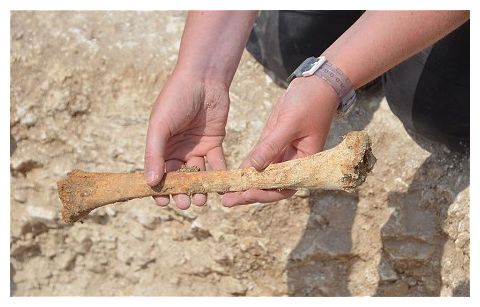
Bournemouth University students working at the Winterbourne Kingston Archaelogical dig.
But undergraduates at Bournemouth University have stumbled upon a major find which could rewrite Roman history in Britain.
For the first time the skeletons of a family have been uncovered at a Roman villa in Dorset field.
The discovery has been described as 'hugely significant' by experts.
It could provide vital clues as to who was living in Britain around 350AD when the Roman Empire was beginning to decline.
Dr Miles Russell, a senior lecturer in archaeology at Bournemouth University, said: "This find is hugely significant because there have been more than 700 Roman villas found in Britain but before now no-one has ever found their occupants.
"Our find could lead to graves of Roman villa owners all round the country being discovered."
"Who lived in Roman villas is one of the big questions in British archaeology and we might finally be able to provide some answers."
Around 85 students, mostly aged in their late teens and early 20s, made the landmark discovery after carrying out a study on a corn field near Winterbourne Kingston near Blandford.
As part of their degree course, they had been trying to establish whether people who lived in Roman villas were British or European.
They were able to map the ground by carrying out a geophysical survey, in which low-level electrical currents are passed through the soil to create a virtual picture of what lies beneath.
To their shock they found a small enclosure around 300 feet from the villa - and after excavating the site they discovered the skeletal remains of two adult males, two adult females and an elderly female.
It is thought they are three generations of the same wealthy family who lived in the villa around 1,700 years ago.
The remains are now being analysed and it is hoped the results will give a clear picture as to who the people were.
The work will form part of the students' final-year dissertations.
"We want to see what sort of changes our country went through at that time and whether the people living in Roman villas were Britons who had become Roman or Europeans who had moved to Britain to exploit the land," said Dr Russell.
"Last year we identified a Roman villa in a farmer's field near Winterbourne Kingston and after conducting a geophysical survey on the surrounding land in May we found a grave site nearby.
"There were the remains of five adults in the grave dating back to the same time as the villa, so it is highly likely they were the villa owners.
"There were two adult males, two adult females and an elderly female. We think they might be three generations of the same family.
"Being Roman was all about showing your wealth and status, and it is likely these people would have been politicians, statespeople or tax collectors.
"They would have been in the top two per cent of society and super-wealthy."
The bones have been sent off for tests which will hopefully reveal their age and health.
Many of the Roman villas around Britain were dug in the 19th century before the technology to conduct geophysical surveys existed so important details have been lost.
"Our find could lead to graves of Roman villa owners all round the country being discovered, added
The site of the dig will be opened to the public on July 13.




Reader Comments
to our Newsletter